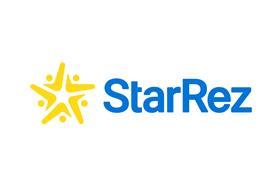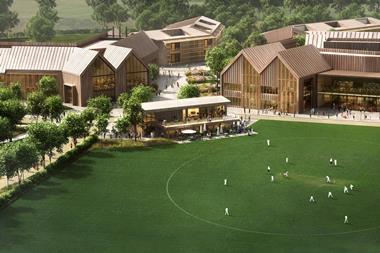The pandemic has allowed the real estate industry to discover and develop best practices, especially in the residential sector. Property managers and operators now have this laser focus on their residents’ experience – all because we’ve been stuck at home, craving human connection.

It is vital to have people moving into a property and feeling they are in a safe environment, particularly after the past 18 months. I empathise with those separated from families and friends and facing additional stress that they wouldn’t normally have. I think that building operators can play a significant role in helping make sure that people living in their buildings are mentally and physically well.
It was really impressive how the whole industry adapted quickly but also how they shared best practices among those considered competitors.
Some came up with Netflix nights, Zoom yoga, online gaming platforms – all this technology at our fingertips. It was wonderful.
I love that the new model in residential operational sectors such as build-to-rent (BTR) is becoming more hybrid. Some people, particularly those who are more introverted or time-poor, actually like the virtual events, while for others, the in-person events give us that human connection. Having technology in place to track who is attending them and how they are attending allows you to monitor and enhance engagement across BTR communities. That has to be the best outcome to come out of lockdown.
Having a technology platform integrated into a BTR building is not just about residents socialising. It’s also about streamlining the living experience, such as allowing people to pick the date and time they want to move in to make sure you don’t have two people arriving at the same time.
These days we are all much more used to a subscription model; we subscribe to music, we subscribe to movies. BTR is a kind of subscription model in a living space
People don’t want to arrive and sign paperwork and mess around with keys. They want to get to the room as quickly as they can. Now, of course, with safety standards, you want to be able to have a contactless move-in, so let technology expedite that process and then operators can have their team focused on customer service.
What has changed for BTR operators is that they can better plan their own resourcing with a proptech solution. As they monitor the use of spaces more closely, such as occupancy, they can better plan the maintenance. They can have staggered arrivals and reduced admin by providing new residents with a barcode. They just need to scan that and then they are on their way.
Having technology in place significantly lightens the load for staff. When residents arrive, they have already been provided with items that are usually time consuming such as contracts that can be managed with electronic signatures. Operators can now change their tune to be customer service orientated so it’s more about: ‘How else can we help?’

The other big change is they that have really refined their communications to residents. Through a resident platform, they can talk to them more frequently through different channels such as online chat or email and fine-tune their message dependent on the residents’ requirements, making sure that it is comprehensive and they answer everyone’s questions.
Flexible lifestyle
With our customer base and experience, we are seeing the habits and trends in the student cycle and beyond from when they’re 17 to 18 years old. What is happening after they have graduated and become young professionals is they are moving into BTR or co-living spaces, or from co-living to BTR. As a result, these residents are getting used to having the types of amenities and services associated with BTR and are therefore accustomed to having that flexibility.
In addition, these days we are all much more used to a subscription model; we subscribe to music, we subscribe to movies. Now people are starting to subscribe to cars and bikes. BTR is a kind of subscription model in a living space. BTR operators are giving people that flexible lifestyle that they want, so the don’t have to be overly committed to one thing for a long period of time.
What can facilitate the growth of the sector and being able to scale up fast is technology. Property developers have built this expertise around finding the sites and developing them. They can do that at speed and scale, but the next thing they need is the technology. Once you get more projects coming along, you need to be able to open multiple buildings in one month and lease them in advance of opening.
Due to the tremendous amount of investment involved, you cannot miss one day of occupancy and usage. Proptech platforms allow developers and operators to create a highly scalable, highly repeatable blueprint. You don’t make the same mistakes from the first opening; lessons are learnt through the monitoring of building usage and resident engagement. You refine and then scale up fast.
In an ideal world, BTR operators want more long-term tenants, but in the early phase of opening, they can only find so many longer-term tenants with the window of time they have, so they need to fill it up with shorter-term leases.
With strong planning, technology and more data insights, they can probably shift that balance to where they want it to be to be a higher degree of longer-term tenancy in the early phase. Residents will come to know the brands to look out for and what can offer them what they need as soon as they move in.
The challenge and opportunities going forward are in a similar space. With new buildings come really high expectations about the types of products and services that are there.
What we are seeing is a huge number of options when it comes to the type of technology you can fit out a building with. It is moving so fast. People have so much choice. Now you can even get high-tech laundry, as well as items driven by sensors such as touchless taps and elevators.
There is a challenge to keep up and build partnerships and integration with a much wider range of products and services. The key is to build standard integration technology that is friendly with any system. That way it is easy to build at scale and stimulate the gold rush happening in the BTR sector in the UK right now.

About StarRez
StarRez was founded in 1992 by Alan Knipe. Born out of his love of technology and interest in problem solving, Knipe wanted to improve the lives of residential community staff through innovative, user-friendly software that allowed them to focus on what they do best – taking care of their residents.
StarRez is the leading residential community cloud management platform, with 800-plus customers and more than two million residents across the US, Canada, the UK and Europe, Australia, New Zealand, Asia and the Middle East.
The end is in sight
- 1
- 2
- 3
- 4
- 5
- 6
- 7
 Currently reading
Currently readingMaster the art of resident satisfaction with proptech
- 8





































No comments yet